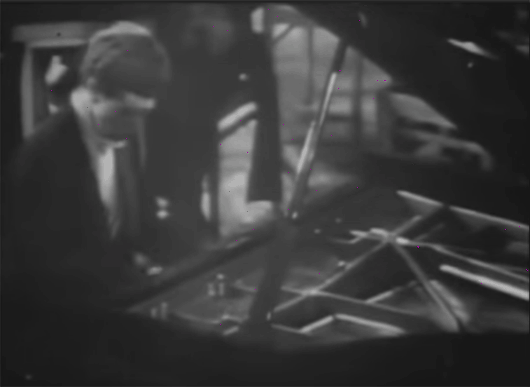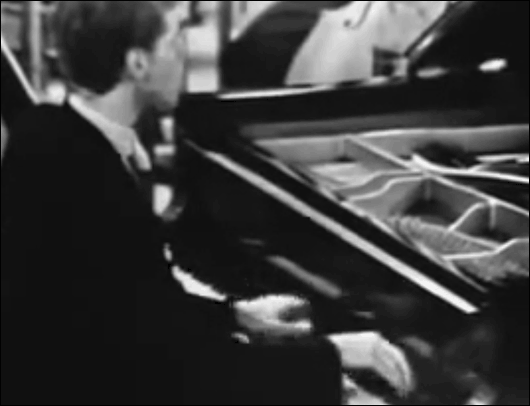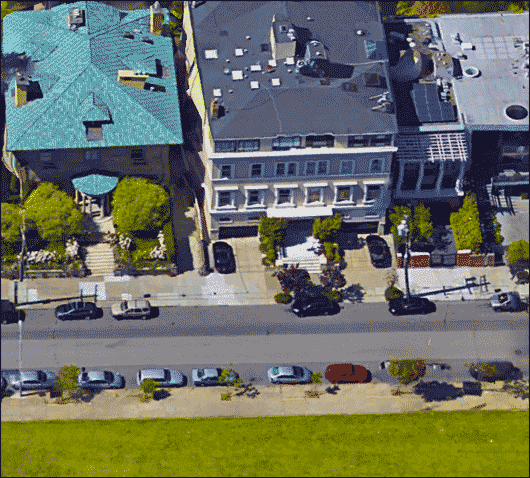
Pianist
Additional Background—
Studied with Other Pianists and Professors
Biography: 1 2 3 4 5 6 7 8 9 10I studied classical piano performance with well-known concert artists, like Sari Biro—Liszt Academy (founded 1875), including Wanda Krasoff (Figure 2).
I also studied with another Professor that studied with these teachers: Ernst von Dhonanyi, Alexander Tcherpnin, Paul Pierre McNeely, John Crogan Manning, Wager Swayne, and Rosalyn Tureck (Leventritt mansion on the left side of photo in San Francisco, California).
Additionally, I studied with other Juilliard teachers. One Professor sat in class at Juilliard with Van Cliburn, John Browning, and he often remarked how everyone knew he was a great pianist; each time he did his piano performance class at Juilliard, which showed his progress as a performer.

Van Cliburn playing Rachmaninoff:
Piano Concerto No. 3 in D minor, Op. 30

Van Cliburn playing Liszt
Hungarian Rhapsody No. 12
I am also very thankful and grateful to Peggy Salkind—former Department Chair Piano at the San Francisco Conservatory of Music and Juilliard graduate—for all her assistance, with regard to my classical piano performance contract. The original plan was developed by me, Wanda Krasoff, and my mom (Mary Heitman). The main contributor was my primary Professor, Wanda Krasoff; I also consulted with other Juilliard teachers and Professors.
Peggy Salkind was very kind and supportive, and her willingness to assist me was way beyond and above many other Professors. She never discouraged me. In fact, she agreed to encourage me. That was very nice of her. She encouraged me to apply to Juilliard or other Ivy League music schools.
I enjoyed her story about when she met Arthur Rubinstein, after his concert at a hotel. She related to me he had very large hands and a strong grip. She met him by chance through a friend. She told me she really enjoyed chatting with him; it was a pleasant experience. I appreciate her attention to detail at my piano lessons with her. She was very helpful and encouraging to me—something a friend never forgets.

Leventritt mansion on the left side of photograph
in San Francisco, California—
where I lived and practised on the Steinway,
on the second floor, facing Alta Plaza park;
private music conservatory;
other pianists in program went to Juilliard.
Both of my piano performance Professors received training directly from Professors that had studied with Franz Liszt, however. Her primary piano performance Professor was Alexander Raab; samples of his piano performance playing, The Condon Collection (Raab; Figure 1).
Biography for Professor Alexander Raab, Pianist
Alexander Raab (1882-1940) was a Hungarian-American pianist and distinguished piano Professor. He was born in Győr (also known as Raab), Hungary.He studied at the Vienna Conservatory under Hans Schmitt (1835–1907), Robert Fuchs and Theodor Leschetizky and became acquainted with Johannes Brahms. He presented recitals with the violinist Jan Kubelík in England, Russia, Germany and France.
He emigrated to the United States of America in 1915, and became Head of the Piano Department at Chicago Musical College, before moving to Berkeley, California, where he became esteemed as one of the best piano Professors on the West Coast.
He performed concertos with the Tonkünstler Orchestra of Vienna, Chicago Symphony Orchestra, Minneapolis Symphony Orchestra, and London Symphony Orchestra. Leopold Godowsky dedicated his 1931 transcription of Adolf von Henselt’s Etude in F-sharp major (Si oiseau j'etais), Op. 2, No. 6, to Raab.
He made a small number of early Duo-Art and Welte Mignon piano roll recordings, with music of Chopin (Sonata No. 1 in B-flat minor Funeral March), Liszt (Hungarian Rhapsody No. 5 in E minor), Mozart, Brahms, and some salon pieces by minor composers.
These recordings appear on CD alongside such distinguished names as Alfred Cortot, Guiomar Novaes, Ignaz Friedman, Arthur Friedheim, Vladimir de Pachmann, Ferruccio Busoni, Josef Hofmann and Harold Bauer.
Students of Professor Raab
He also taught Ernest Hutcheson. He would become Dean and then President of The Juilliard School, and he taught eminent pianists that included: Bruce Hungerford and Abram Chasins.
The Juilliard School Classical Piano Performance Program
Introduction to The Juilliard SchoolOther students of Professor Raab included:
Ernst Bacon, Vera Bradford, George J. Buelow, Muriel Kerr, Mortimer Markoff, Sumner Marshall, Robert Owens, and Allan Willman. His pupils also studied under teachers such as Alfred Cortot, Nadia Boulanger, Rudolph Ganz, Percy Grainger, and Paul Wells.
Documentary: Imagine Being a Concert Pianist
Introduction to Documentary: Imagine Being a Concert PianistArthur Rubinstein (20:55) stated that there is really no method, and I have personally come to the inner realization there is really no method, except a systematic approach works better. One has to dig deep down to their inner soul, which is quite subjective.
Fine to remember that his pianistic pedigree dates back to the great masters. As a student of Professor Karl Heinrich Barth, Rubinstein inherited a renowned pedagogical lineage: Barth was himself a pupil of Liszt, who had been taught by Czerny, and who had in turn been a pupil of Beethoven.
He tries to help a student discover his/her own unfoldment; I agree, however. I do feel a solid foundation from the many basics is essential, not to skip. I personally feel and think that having a creative imagination is an asset to any pianist.
To imagine something in consciousness, this gives one the ability to visualize about it. I mean to think about how it feels to do whatever one wants to do. How does getting up on stage make you feel? It makes me feel very awesome, because I love to play piano and perform.
How does it make you feel? Well, it makes me feel good. I started to realize that when I imagine things in life that they just seem to fall into place. Imagine how it feels to get up on stage and perform. I feel really pretty good about it. Then I realized that it makes all my fans feel pretty excited and good, too. When they tell me to play this piece or another piece, then I want to play more and more for them all.
To create beauty and lovely tones and perform from my heart, this makes for harmony in life and music. For love is one of the most powerful forces that works in consciousness and in life. Love what one does certainly bring all the zen-like spiritual qualities (soul) into play and movement. It all really does happen in consciousness (right now I am listening to a Beethoven piano concerto; just listening to it made me think these thoughts). Prior to that I was listening to a fabulous Mozart piano concerto and then some Chopin and Schumann.
The conversation between the piano and orchestra is apparent, and that is how and why I communicate with audiences. A pianist also finds other conversations, for example, in Beethoven Sonatas or other Brahms pieces. The pianist must be a strong communicator. All of this made me realize why I have so many university degrees in communication. But it is more than that for me; it is a song or a melody that catches my ear and then my soul. It impresses me. Then I realize the composition, first mentally, and then by thinking about. How would I play it? How does the phrasing go? I feel, as a pianist, tonal qualities and phrasing are very important components to every piece of music performed.
I approach each and every piece of music, by conceptually figuring out the phrasing and harmonic patterns. Music and playing piano is very exciting for me. It turns me on. The truth is the love behind the actions required to be a pianist. When you are a pianist, it is because you have to be a pianist. There is no other choice in life!
◼ The Leschetizky Method
Steven Heitman
Pianist
Copyright © 1998-2027
All rights reserved
Updated: March 1, 2022